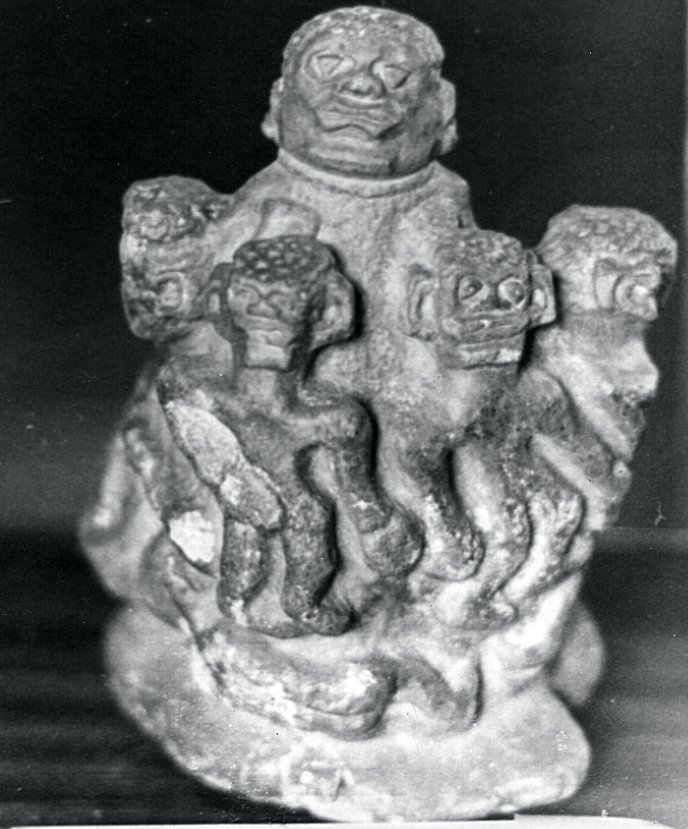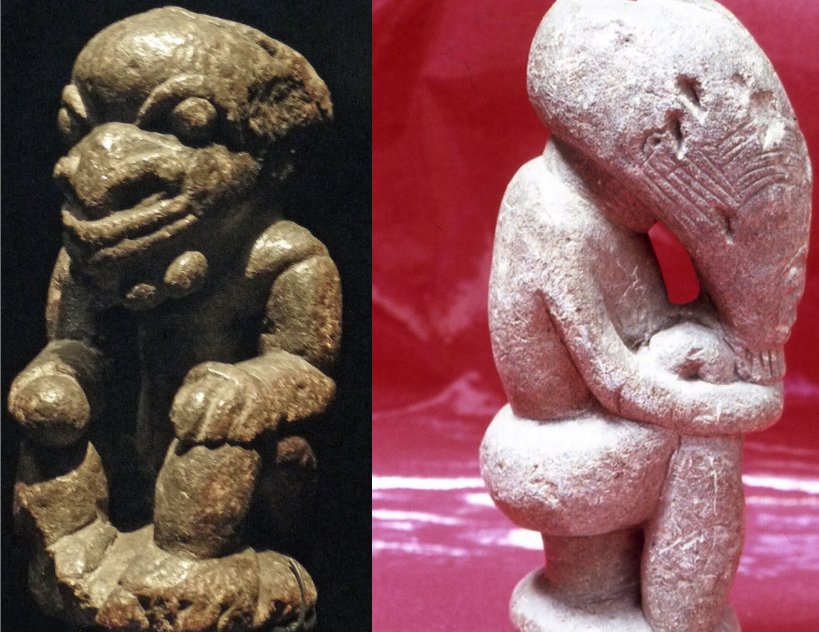Monstrous Nomoli Figures Left By Unknown Culture That Vanished Long Ago
A. Sutherland - AncientPages.com - The so-called Nomoli figures were found in Sierra Leone, West Africa.
The Nomoli are mysterious stone figures from 2,500 years to approximately 15,000 BC and even 17,000 BC. They seem to prove the existence of an advanced ancient civilization in West Africa.
Nomoli (Musée national de Sierra Leone). Image credit: John Atherton — Soapstone "Nomoli" figure from Sierra Leone (West Africa) - CC BY-SA 2.0
People of Africa also have memories of the giants who once lived on Earth. African legends describe these mighty beings as courageous and strong men with shining eyes, and their voices could be heard from one town to another.
An exciting discovery was made when a small metal ball was found in a hollow space inside the Nomoli figurine.
A legend tells that:
"They wandered without let or hindrance to places where no man had ever been before. One could not look them in the face because their eyes were so bright that it hurt one's own eyes to look at them. It was like looking at the sun."
Another legend says about divine creatures banned from the celestial empire and sent to Earth, which leads us to a representation of the "fallen angels" mentioned by various cultures.
This civilization, capable of reaching very high melting temperatures, also used the right tools for modeling perfectly spherical objects like those found inside the figures.
An analysis by the Museum of Natural History in Vienna, Austria, revealed that it is made from chrome and steel.
Left: Nomoli people, Mende, Sierra Leone; Right: Nomoli - Soapstone "Nomoli" figure from Sierra Leone (West Africa). Image credit: John Atherton, photo: British Museum, London, June 1970. - CC BY-SA 2.0
The earliest known production of steel is a piece of ironware unearthed in Anatolia (Kaman-Kalehoyuk) and is about 4,000 years old. How did it get there? And much more important - where did the metal come from?
The Somali - some were discovered at depths of 50 meters - depict mostly different human races from the so-called Caucasian to Negroid or their heads. Still, sometimes they resemble semi-human or semi-animal "monsters" and animals like monkeys, leopards, and elephants.
Some figurines depict lizards with human heads, and human figures with heads disproportionate to the rest of the body are usually shown in squatting or kneeling positions; one of the most common depictions represented by the Nomoli is a frightening-looking adult with a child.
Most Nomoli figures were made of soapstone or diverse kinds and colors of steatite, from dark green to light yellow-brown and almost white.
The Michael C. Rockefeller Memorial Collection, Bequest of Nelson A. Rockefeller, 1979 - CC0 1.0
The stone contains a high percentage of iron available in various parts of Sherbro Island in the Atlantic Ocean, located in Bonthe District off the Southern Province of Sierra Leone, West Africa.
Additionally, it is worth mentioning that none of these oral traditions indicates that the territory - now inhabited by the Mende - was previously occupied. It raises some critical questions: were there any earlier inhabitants?
Who were they? And what happened to them? Some scholars claim that these earlier inhabitants were the manufacturers of the mysterious Nomoli figurines carved in soapstone and found throughout the area now inhabited by the Mende people.
Those who sculpted the Nomoli figurines probably once occupied much of the present-day territory of the Mende, but according to ancient sources, they were pushed coastward.
Written by – A. Sutherland - AncientPages.com Senior Staff Writer
Updated on March 9, 2023
Copyright © AncientPages.com All rights reserved. This material may not be published, broadcast, rewritten or redistributed in whole or part without the express written permission of AncientPages.com
Expand for referencesReferences:
Basil Davidson, The African Genius
British Museum, London
More From Ancient Pages
-
 Why Is The Black Prince Still A Controversial Historical Figure?
Ancient History Facts | Aug 15, 2019
Why Is The Black Prince Still A Controversial Historical Figure?
Ancient History Facts | Aug 15, 2019 -
 Neanderthals And Other Ancient Humans Were Much More Intimate Than Previously Thought – DNA Shows
DNA | Jul 12, 2024
Neanderthals And Other Ancient Humans Were Much More Intimate Than Previously Thought – DNA Shows
DNA | Jul 12, 2024 -
 Saraswati – Hindu Goddess Of Knowledge, Learning And Vedic Symbol Of Speech, Vach
Featured Stories | Jun 23, 2021
Saraswati – Hindu Goddess Of Knowledge, Learning And Vedic Symbol Of Speech, Vach
Featured Stories | Jun 23, 2021 -
 Was Biblical King David Unknowingly Part Of A Secret Master Plan?
Biblical Mysteries | Jul 1, 2021
Was Biblical King David Unknowingly Part Of A Secret Master Plan?
Biblical Mysteries | Jul 1, 2021 -
 Radar Discovery Of Unknown Space Beyond Tutankhamun’s Burial Chamber May Lead To Queen Nefertiti’s Tomb
Archaeology | Feb 21, 2020
Radar Discovery Of Unknown Space Beyond Tutankhamun’s Burial Chamber May Lead To Queen Nefertiti’s Tomb
Archaeology | Feb 21, 2020 -
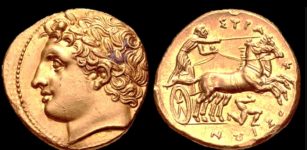 Agathocles Of Syracuse: Sicilian Ruler Who Committed Numerous Crimes Saved And Extended Sovereignty Of Sicily
Featured Stories | Jul 26, 2019
Agathocles Of Syracuse: Sicilian Ruler Who Committed Numerous Crimes Saved And Extended Sovereignty Of Sicily
Featured Stories | Jul 26, 2019 -
 Native Americans’ Visions Of Distant Explorers May Unravel Some Ancient Mysteries Of North America – The Arrival – Part 1
Featured Stories | Nov 19, 2019
Native Americans’ Visions Of Distant Explorers May Unravel Some Ancient Mysteries Of North America – The Arrival – Part 1
Featured Stories | Nov 19, 2019 -
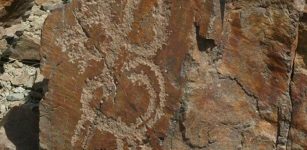 Petroglyphs Hold Secrets To 14,000 Years Of Human Life In Iran
Archaeology | Apr 30, 2020
Petroglyphs Hold Secrets To 14,000 Years Of Human Life In Iran
Archaeology | Apr 30, 2020 -
 Trentren And Caicai: The Battling Serpents Of Chilote Mythology
Featured Stories | Jul 10, 2022
Trentren And Caicai: The Battling Serpents Of Chilote Mythology
Featured Stories | Jul 10, 2022 -
 Spectacular Ancient Underground ‘Stonehenge’ Dolmen De Soto Reveals Its Secrets
Archaeology | Apr 18, 2019
Spectacular Ancient Underground ‘Stonehenge’ Dolmen De Soto Reveals Its Secrets
Archaeology | Apr 18, 2019 -
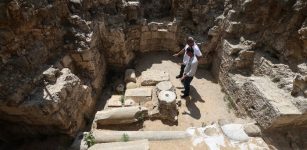 Large Ancient Roman Necropolis Is Buried Beneath The Gaza Strip – Can It And Other Ancient Treasures Be Saved?
Archaeology | Jun 26, 2022
Large Ancient Roman Necropolis Is Buried Beneath The Gaza Strip – Can It And Other Ancient Treasures Be Saved?
Archaeology | Jun 26, 2022 -
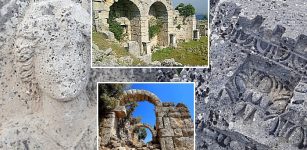 Excavations In Ancient City Of Cremna – One Of The Five Colonial Cities In Pisidia
Archaeology | Sep 26, 2023
Excavations In Ancient City Of Cremna – One Of The Five Colonial Cities In Pisidia
Archaeology | Sep 26, 2023 -
 Thales Of Miletus: One Of The Famous “Seven Sages Of Greece” Who Predicted A Solar Eclipse
Featured Stories | Aug 12, 2016
Thales Of Miletus: One Of The Famous “Seven Sages Of Greece” Who Predicted A Solar Eclipse
Featured Stories | Aug 12, 2016 -
 Princess Mkabayi KaJama: Condemned And Hated Zulu Kingmaker Who Died A Lonely Woman
Featured Stories | Mar 20, 2019
Princess Mkabayi KaJama: Condemned And Hated Zulu Kingmaker Who Died A Lonely Woman
Featured Stories | Mar 20, 2019 -
 Mysterious Bronze Age Burial Chamber Discovered In Devon, UK
Archaeology | May 16, 2024
Mysterious Bronze Age Burial Chamber Discovered In Devon, UK
Archaeology | May 16, 2024 -
 Ouroboros – Cosmic Serpent And The Self-Devourer – Universal, Powerful Symbol Of Great Antiquity
Ancient Symbols | Oct 22, 2017
Ouroboros – Cosmic Serpent And The Self-Devourer – Universal, Powerful Symbol Of Great Antiquity
Ancient Symbols | Oct 22, 2017 -
 Effects Of The Volcanic Eruption In Alaska Rippled Through Ancient Egypt During Cleopatra’s Reign
Archaeology | Jul 26, 2022
Effects Of The Volcanic Eruption In Alaska Rippled Through Ancient Egypt During Cleopatra’s Reign
Archaeology | Jul 26, 2022 -
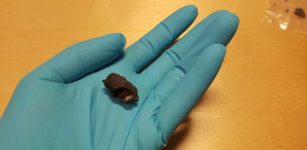 Oldest Scandinavian DNA Found In Ancient Chewing Gum
Archaeology | May 15, 2019
Oldest Scandinavian DNA Found In Ancient Chewing Gum
Archaeology | May 15, 2019 -
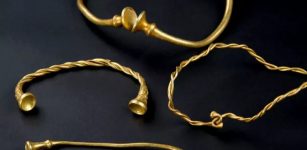 Unique 2,500-Year-Old Celtic Jewelry – Oldest Iron Age Gold Treasure Ever Found In Britain
Archaeology | Mar 3, 2017
Unique 2,500-Year-Old Celtic Jewelry – Oldest Iron Age Gold Treasure Ever Found In Britain
Archaeology | Mar 3, 2017 -
 Coventry’s Mysterious Ogham Stone Displayed At Herbert Art Gallery And Museum
Archaeology | May 18, 2024
Coventry’s Mysterious Ogham Stone Displayed At Herbert Art Gallery And Museum
Archaeology | May 18, 2024

